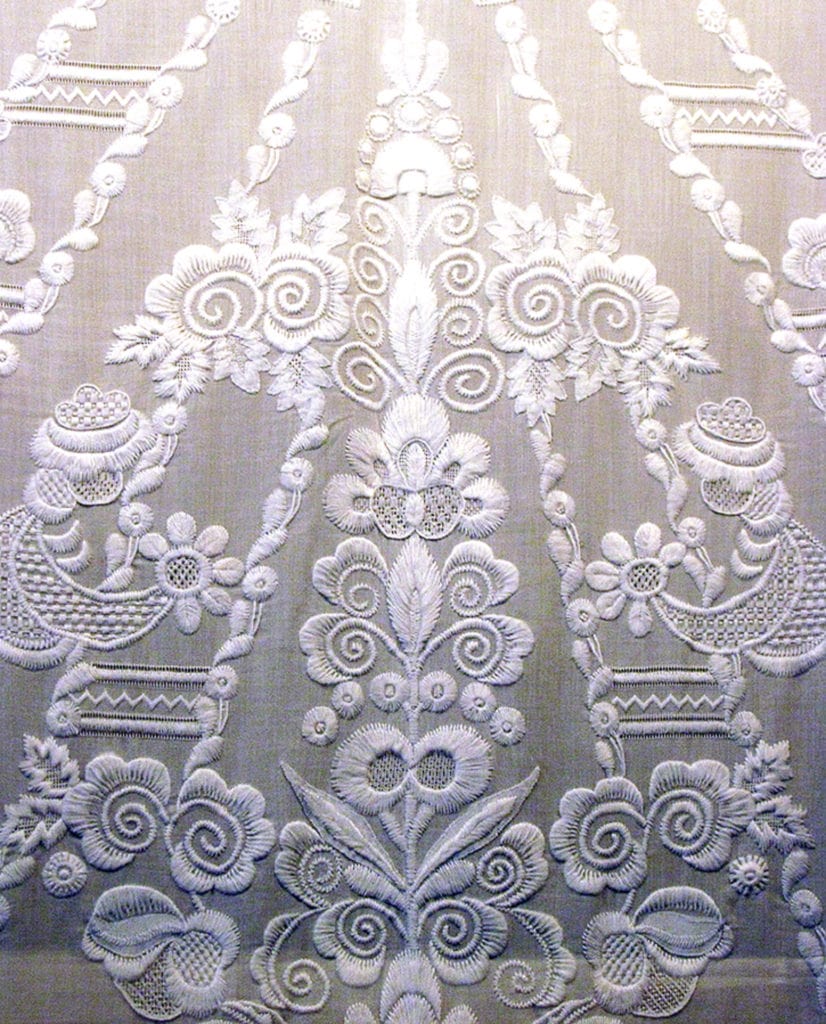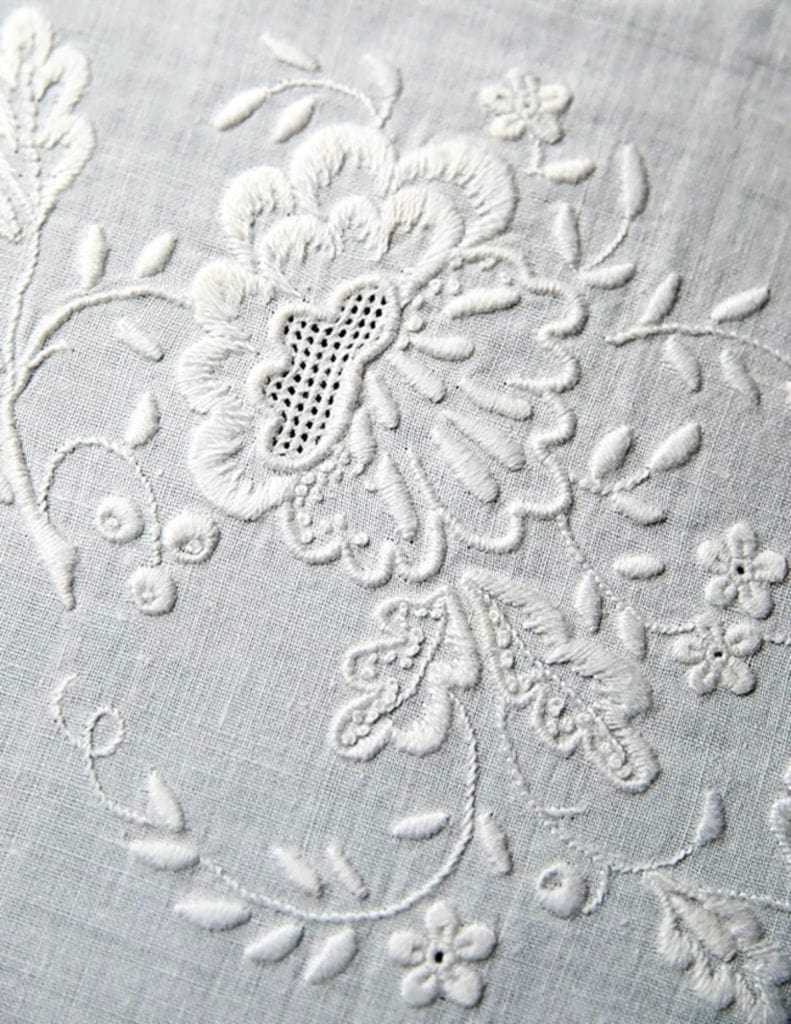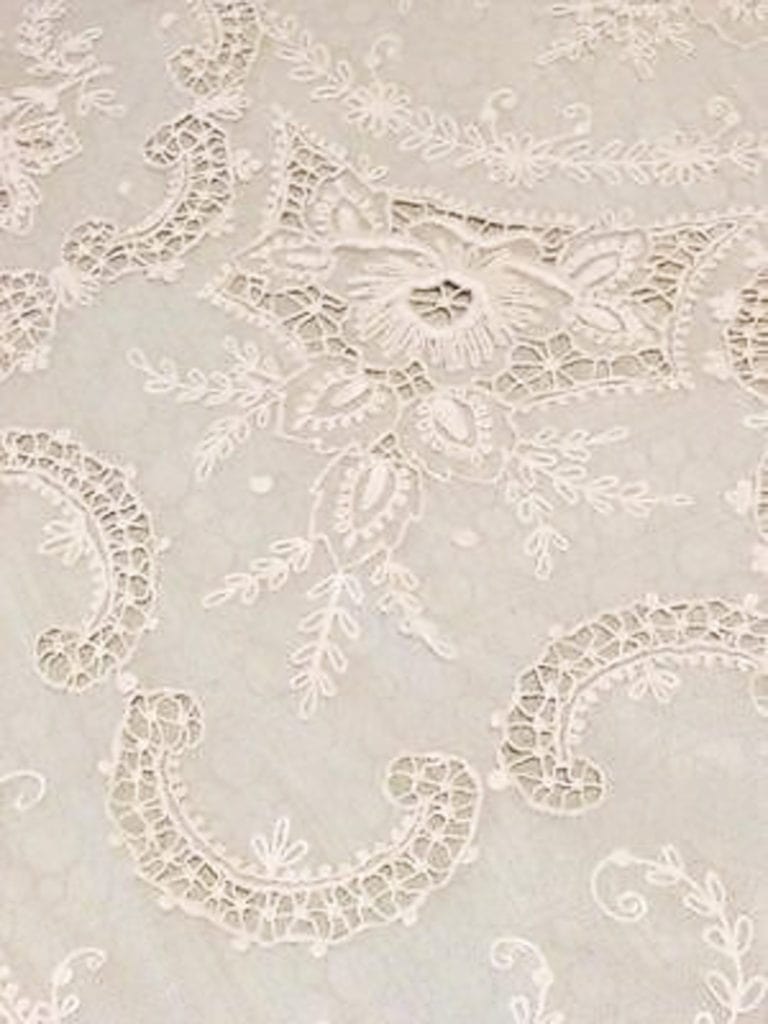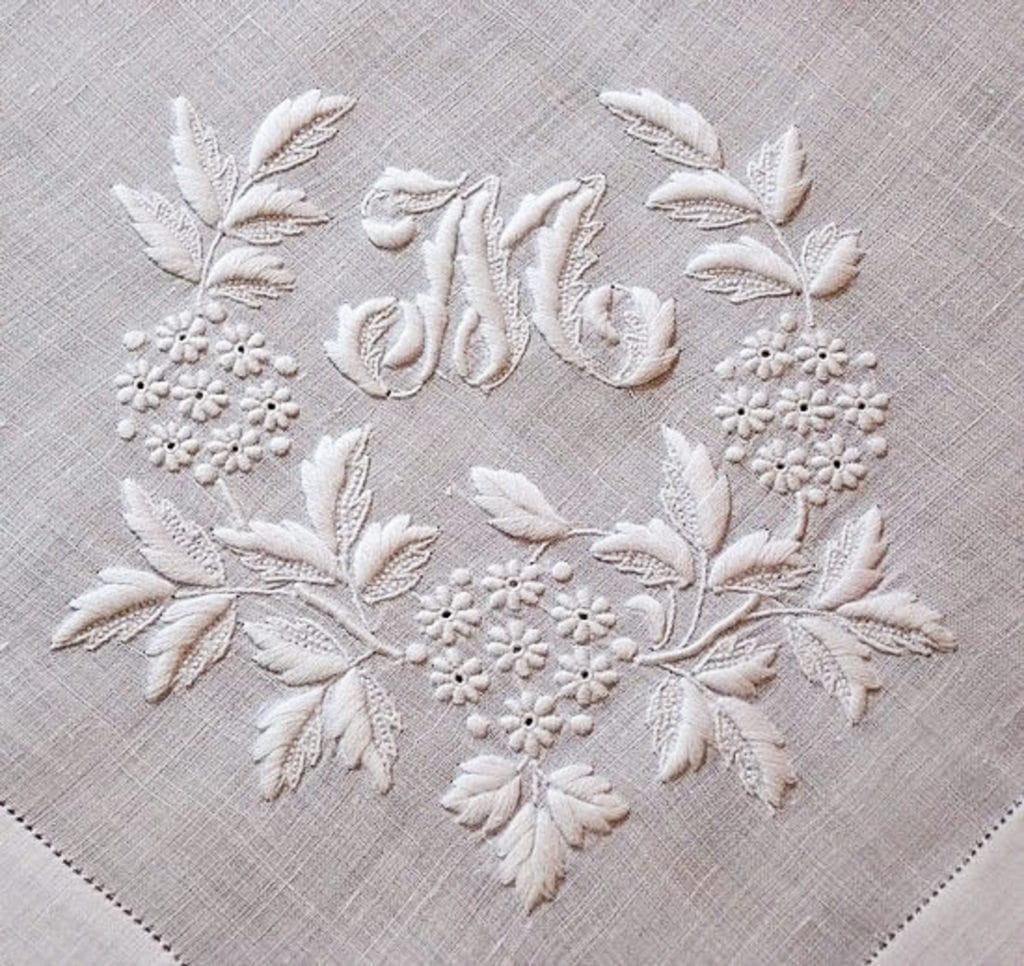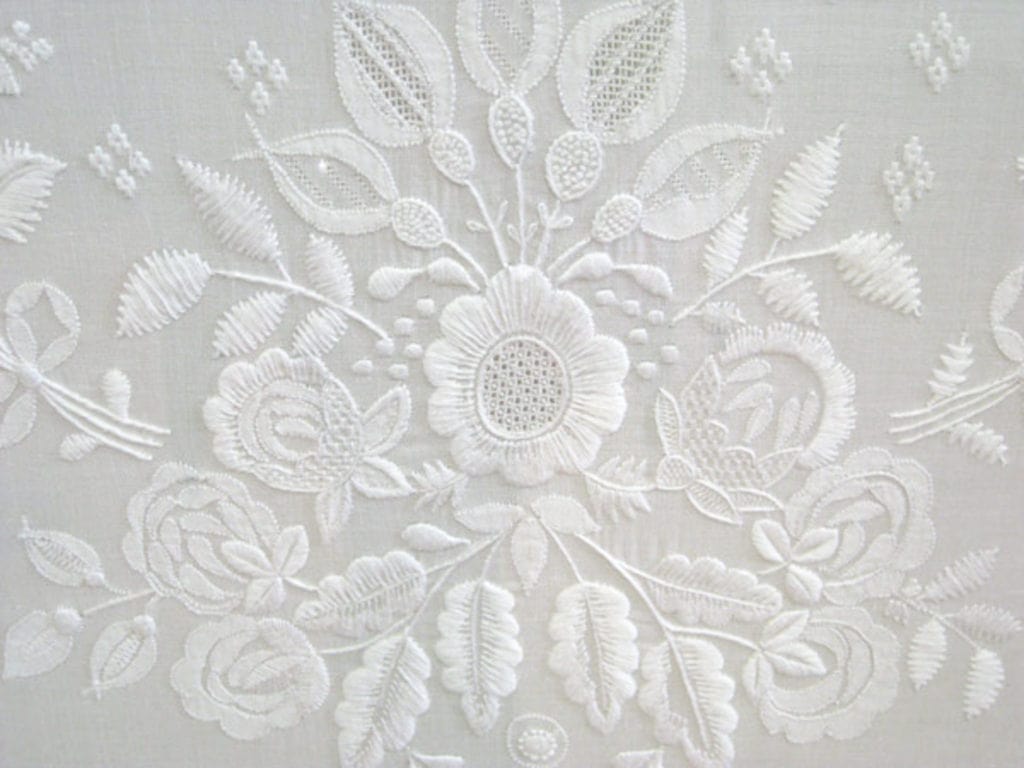Embroidery white surface as a decoration of clothes.
Embroidery white on white has become widespread in many countries. In the second half of the XIX century, this expanse was famous in Great Britain, France, Belgium, Germany, Switzerland. In the language of folk symbolism in many countries the color in clothing, as well as in embroidery, plays a major role. For example, white in It has long been associated with Russia with the idea of light, of heaven. Perception white color combined with the meaning of happiness, abundance, purity, innocence and beauty.
White surface in Russia
The smooth surface
The Mstersky smooth surface originated in the village of Mstera in the Vladimir province in mid XIX century. It is distinguished by its sophistication and miniature vegetable patterns with white threads on a thin white cotton fabric such as marquise and cambric. The main technique of this embroidery is the two-sided surface, which sewn closely adjacent to each other by stitches, arranging them in shape motive from the front and the wrong side of the fabric. It is usually performed thin needle thread mouline thread in 1-2 addition. In the figure where convexity is required, flooring is made from the same threads.
The smooth surface combines various relief elements with and without flooring, with strokes, eyelets and half-loops, stalk-like seam. Patterns are complemented by openwork grilles, banners, holes, knots and nets. All this creates decorative embroidery, made in one color. Larger petals are embroidered in bulk.
In the white surface there are motifs made holes and welt finish. Holes are obtained by puncture special bone, wooden or metal stick with a pointed end. If the holes are large, they are made with scissors, cutting the fabric into future hole vertically and horizontally on both sides (slotted surface). Leaves of elongated shape are sometimes also made with welt finish
«Banners» – one of the most decorative elements of the white mster surface, although laborious. "Banners" are performed on thin fabrics with a plain weave. Spine pulls together a square of fabric, in which, for example, three threads of the base are intertwined with three weft threads . Before performing a banner on a dense fabric, you must cut one or two threads of the warp and weft at the edge of the pattern and pull out. Sometimes mstiorskya surface blends beautifully with hemstitch.
Blouses, collars, handkerchiefs, nightgowns, bedding, bedspreads, and, of course, women's and children's dresses adorn the smooth surface.
English white surface also belongs about the same kind of embroidery, but here still mostly prevail holes and scallops. Almost all motifs are twigs with leaflets in in the form of holes sheathed around the surface. This surface is called - English white work - “whitework” or “Broderie Anglaise” - “English embroidery”. This embroidery was unusually popular in England in the 19th century, although it is believed It arose in the 16th century in Eastern Europe.
Embroidery patterns are flowers, leaves, vines, stems made with simple embroidery stitches. These are mainly small drawings. Holes are made in the same ways as in the smooth surface, but in some cases, patterns are first embroidered on fabric, and then holes are cut with scissors.
Broderie Anglaise began in the 1870s. perform on a swiss embroidery machine. Today Broderie Anglaise created mainly by machine method.
Once upon a time, Broderie Anglaise was popular for women's underwear and children's clothing. Since the mid 50s Twentieth century English embroidery began to be used not only for decoration underwear, but also in women's dresses.
Today both the smooth surface and the English Embroidery is popular in many styles of clothing and perfectly complement each other.
Light silk dresses on narrow strapless, reminiscent of a combination, or white dresses with the most plain cut, decorated with beautiful decorative embroidery. Decoration sometimes frills embroidered to match the color of the fabric. Most often these are white, beige and others pastel colors, however black color is not canceled.
